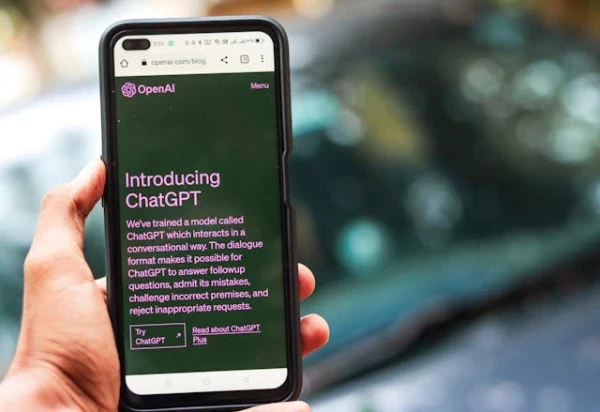How LinkedIn is Using Generative AI to Let Customers In
Add bookmark
For some, generative AI seemed to come out of nowhere. Overnight, there were revelations across the globe about an AI tool that could seemingly change everything. Its engaging tone and ability to banter and evolve throughout a conversation drew users in immediately. Because, after many years of failed chatbot interactions, this new technology offered an exciting path forward for digital engagement.
Promptly after generative AI-powered ChatGPT was released to the public, on November 22, 2022, executives at LinkedIn realized it was going to be influential. Hobson Powell, VP of Global Support at LinkedIn, noted that leadership was immediately called upon to discuss its potential impact.

He shared at the CCW Executive Exchange in Denver this past week, “I understood that there was going to be a lot of tension from the team around us because there was sort of a hyperbole in a lot of headlines that this is going to shake up everybody's job…”
However, this discussion was nothing new for Powell. With buzz about ChatGPT circulating, Powell and his team felt confident that they were already ahead of the curve. “(I said) remember how we’ve been working on our chatbot for the last few years, and we’ve been getting more intelligent?…that’s the same thing, it has been using generative AI.”
Once they understood that the very tools that have been supporting them over the last few years were powered by the same technology, the support team gained a sense of pride in their forward-thinking strategy.
With 930 million members, Powell states that generative AI has been one of the key resources his team relies on to properly meet the demand of their members and enterprise customers. In fact, AI has empowered his team to engage with customers more freely across the board. “(Generative AI) has enabled us to go from sort of that mentality to opening up the doors, opening up the windows and garage, come on in let’s have a party. We can invite you in now because we can handle so much more with this technology,” he states.
So, how is LinkedIn leveraging generative AI? And what use cases have been most impactful?
Powell shares that it has been a vehicle into self-service. The team learned that through their chatbot they are able to unlock more expansive experiences. Customers can use it not only as a way to self-serve, but they can get to a real person — creating their own personal journey. As a result, Powell has seen improvements in CSAT and increased their reach by 2 to 3 times.
The LinkedIn team is also using generative AI to assess competencies at scale — by summarizing and addressing key areas of improvement over time. They have leveraged it to improve knowledge management and build training content for the hybrid world. With a distributed setup, the team has moved away from a one size fits all training approach and used AI to help generate full programs to bite size learning nuggets, ensuring that individuals who are in the office and at home are receiving training that works most effectively for them.
Essentially, Powell shares that the scope of AI goes far beyond support, it helps LinkedIn stay on track with continuous improvement. He states, “that’s what keeps me up at night… we need to keep up with the pace of change and generative AI is making that pace a little faster.”
Although AI is certainly helping speed up the rate of innovation, LinkedIn is staying on the positive side of change. By prioritizing their currency of product expertise, the team is working to not just keep up, but improve experiences and build lasting customer relationships.
Ultimately, Powell notes that generative AI’s enabled his team to enhance engagement and add value to interactions.
“The way we’ve looked at it at LinkedIn is that the efficiency that we gained and the additional ability to open ourselves up to more of our members, and more of our customers, as we’ve been growing, it’s been powered by generative AI. We’re not doing that to replace roles, we’re doing that so that our most valuable resource, our product experts, our agents… are able to work on more valuable stuff. We see that we can do so much when we have a successful, seamless, frictionless service experience,” he states.
With more seamless resolutions, his support team is able to better connect with members and understand their relationship with the brand. Powell shares that his team has been able to add value moments and pinpoint key areas that customers can optimize their membership.
As LinkedIn works to optimize experiences and build member relationships, generative AI has acted as a serious support system. By opening up self-service and streamlining operations, Powell’s team has been empowered to engage with customers in a new way. While new technology is certainly exciting, organizations like LinkedIn are taking a leap forward and using these modern tools to improve communication, nurture connections and ultimately be more human.


































